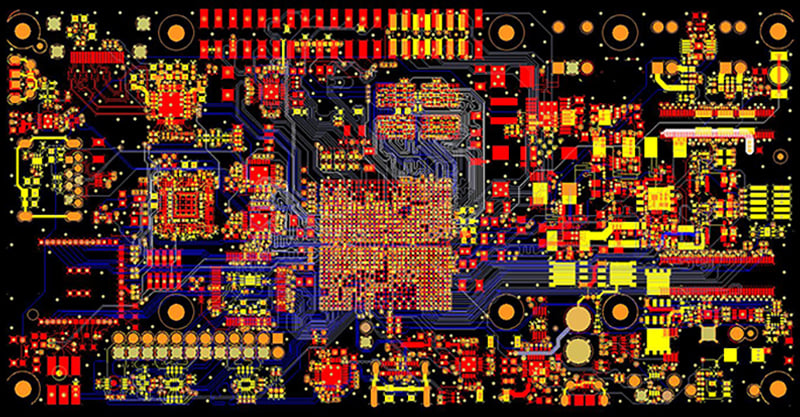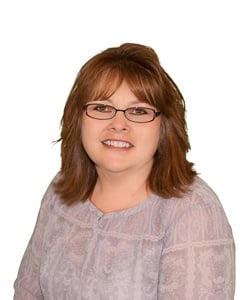When it comes to printed circuit boards (PCBs), the bare board is always where customers look to cut costs. Unfortunately, we often see this request after the design has been completed and we have the Gerber files in hand to quote the printed circuit board.
Cost-savings is more than just the raw bare board reduction. Components are in some cases very expensive and at a fixed cost with no reduction offered. Many components are purchased at a very high volume on reels, and that cost is absorbed by many orders eventually, but as you can imagine, there is a markup. If you allow for a crossed component in your product, there could be a savings. Then, there are assembly costs. They buy the components at the best price they can for the quantity needed and pass some of that onto you. I am sure we all look to save in all aspects of our companies, so here are some tips for you to look for when it comes to PCB cost savings.
In this blog post, we will touch on something to consider prior to design and layout. There is an advantage to having a strong relationship with your PCB manufacturer at the pre-design phase.
PCB Layer Count and Overall Thickness
Let’s first discuss the PCB layer count. It is one of the first items we look for when costing. The number of copper layers in the PCB total (not including mask or legend). Whether you are buying a 2-layer or a 22-layer, this is one of the first adders. Keeping the layer count to a minimum but not allowing the technology to be compromised can be tricky.

Example of a Multi-layer PCB Design with ground layers omitted.
Trace and space must be considered and some of the time adding additional copper layers is better than squeezing in the technology into less. Why? Most manufacturers would rather process boards with greater than 0.005” trace/space than less. If adding a core allows for better trace/space this decreases fall out and can save cost.
The second part of layer count is the overall thickness of the PCB. This measurement is top to bottom overall thickness of the final build. The measurement is typically over mask and metal. A greater thickness than 0.062” is considered special or has an adder applied. You do not want to compromise dielectrics to skimp on layer count or thickness charge, but in some cases, it is better to increase thickness and layer count. Too many layers with too thin of a dielectric can pose a problem as well.
With the increase in thickness, you must consider aspect ratio and manufacturability. To calculate the aspect ratio, take the smallest plated hole size divided by the overall thickness to get the aspect ratio. The larger the number is the more difficult the hole will be to plate the barrel. Considering increased diameter is a way to assist in manufacturability.
Size and Shape of The Circuit Board
Physical size also plays an important role in cost and manufacturing. Consider the usable master panel size is roughly 22 x 16 inches. Ideally, we would prefer to run multiple parts on a single panel, so your PCB does impact cost by its size.
For example, a part that is 8 x 11 inches rectangular shape can fit 4 times on a master panel, whereas the same part 8.25 x 11 inches will only fit 2 times on the master. The 8 x 11 also changes to 2 up only if it must be routed not scored. Less than 8 x 11 inches is better for manufacturing multiple parts per panel. Keeping the part squared allows for scoring or routing where cuts and angles force the part to routing, which adds processing time and cost.
Drill Count, Sizes, and Via-in-Pad
We briefly touched on aspect ratio; the thickness of the PCB divided by the diameter of the smallest hole size. The higher the aspect ratio, the harder it becomes to plate the barrel of the hole. If possible, keep to the largest hole size possible to allow for greater thickness of the PCB. Combining drill sizes is another way to reduce the cost.
When possible, review component leads and choose drill sizes that will accommodate several parts; this avoids multiple drill size changes and saves on time and cost. Avoid the via-in-pad processing, when possible, as land becomes tighter on the surface it is more difficult to do this, but this unique specialty process adds significant cost and time to processing.
When possible, avoid blind and buried vias, this type of hole adds significant time and cost to production. If you must use this technology, limit using multiple sets to one side of the PCB when possible.
Surface Finish
Surface finish choices are plentiful and some of them cost more than others. ENIG, electroless nickel immersion gold, is the most requested finish to be applied to PCBs; it does have a higher cost but is reliable and has a decent shelf life. Because this finish is the most popular, most manufacturers have the process in-house.
Others such as Immersion Tin, OSP, or LF-HASL are often outsourced to a different processing supplier adding additional hidden costs. Not all PCB suppliers can designate a plating line or bath to each surface treatment request for this reason a third part is used. It is also true that HASL, one of the oldest surface treatments still applied to boards has been phasing out of processing. Hot Air Solder Leveling contains lead, is not RoHS compliant, and does pose a hazardous waste to the environment, staying away from this less-than-flat uniform surface finish on a tight surface mount PCB is better for assembly as well.
Materials, Tg, Copper Weight, and Brands
Material suppliers are plenty full; however, not all PCB suppliers commonly stock all brands. The best way to state what is desired is by the Tg rating. FR4 135Tg is the common temp material however it’s somewhat non-RoHS stock, although it is RoHS-compliant material in it, it does not have the capability to withstand multiple wave solder cycles.
Higher temperature materials with 170Tg or 180Tg are recommended for RoHS-compliant PCBs. Calling out the Tg or the IPC-4101 slash number is a better way than by brand. PCB manufacturers also do not UL all materials made so allowing for flexibility. The higher temperature rated material cost more, sticking with 170tg is best cost-wise and supply as well, 180Tg is a lower stocked material and has a higher price tag.
Balancing the copper weight is best from side to side of the core or top to bottom. ½ oz and 1oz are more commonly stocked, where 2oz and greater cost more and are on the shelf at a lesser quantity. Like everything the higher volume, you buy the better price you may get per.
Summary
As we have seen, costs for everything from food to gas to household items, and the standard costs for PCB have also increased. Paying attention to design details and knowing the items that increase cost will help you guide the design team to a better design at a better price.
We are constantly asked to reduce costs or how can you remove costs from your part these are some things to remember. Using Epec’s free DFM service at the design phase will help you with delivery, cost, and redesigns.
Key Takeaways
- Start Cost-Saving Before Design Begins: The most impactful cost reductions happen during the pre-design phase. Involving your PCB manufacturer early allows for design optimizations that can avoid expensive features like via-in-pad, unnecessary layer counts, or complex surface finishes.
- Optimize Layer Count and PCB Thickness: Layer count and board thickness significantly affect cost. Designs with excessive layers or high aspect ratios (thick boards with small holes) increase processing difficulty. Strike a balance between manufacturability and performance by adjusting trace/space, core counts, and copper distribution.
- Be Strategic with Drill Sizes and Vias: Consolidating drill sizes and avoiding costly features like blind/buried vias and via-in-pad wherever possible will cut down on machine time and improve yield. Larger holes and standard drill patterns reduce complexity and cost.
- Use Cost-Efficient Surface Finishes and Materials: ENIG is the most cost-effective finish for performance and availability, while outsourced finishes (like Immersion Tin or OSP) may carry hidden costs. Stick with common Tg-rated materials like 170Tg and standard copper weights (½ oz or 1 oz) for better pricing and availability.
- PCB Shape and Panel Utilization Matter: Efficient use of master panel space (e.g., fitting more parts per panel) dramatically reduces costs. Keep board shapes simple and under 8" x 11" when possible, to maximize yield and minimize routing time.
















